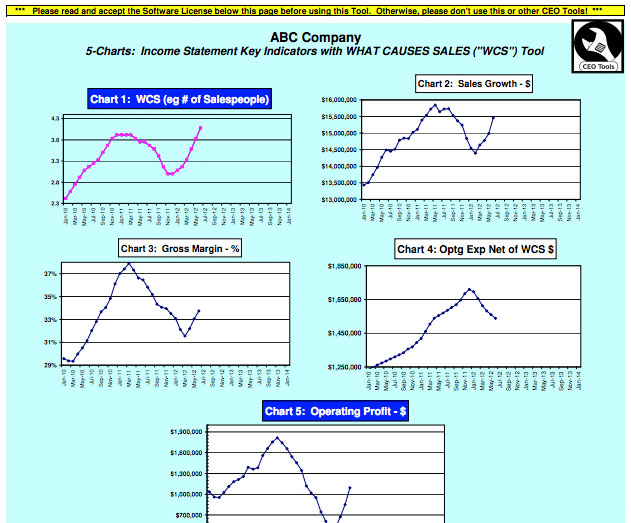Leadership Catalyst Blog

3 Things You Need to Know About Vistage CEO Peer Groups
All Blog Posts, Vistage Peer Groups / 03.12.2013
Vistage CEO Peer Groups are a powerful resource for Minnesota business leaders.
As the leading Vistage Chair in the Twin Cities, I routinely facilitate peer groups for some of the top executives in Minnesota. Over the last year, my peer groups have been noted in a variety of publications such as The Minneapolis Star Tribune, The Minneapolis/St. Paul Business Journal, and Entrepreneur Magazine.
Despite increasing amounts of media coverage, many business leaders are still unaware of the benefits that CEO peer groups have to offer. The most frequently asked questions I encounter are:
- What is a CEO or executive peer group?
- Why do people join CEO peer groups?
- What topics do CEO peer groups cover?
The following post provides answers to those questions and guidance on finding the right peer group for you.
1) What is a CEO peer group?
A CEO peer group is a cohort of executives and owners of non-competing businesses who meet regularly to help each other grow their organizations, their people, and themselves.
These peer groups are intended to be a confidential “safe haven” where business leaders can work through their toughest strategy, leadership, and people challenges together.
Most importantly, CEO peer groups consist of experienced executives who share the frank feedback that is often so hard to obtain within one’s organization.
2) Why do people join CEO peer groups?
The members of my CEO peer groups join for a variety of reasons, both personal and professional.
Most entrepreneurs join CEO peer groups because they want to increase their effectiveness as leaders or enrich their lives – for entrepreneurs these aims are often intertwined.
For CEOs or heads of companies, many join CEO peer groups because they want to run their businesses instead of having their businesses run them. These individuals find that meeting monthly with a group of experienced, non-judgmental peers helps stop them from working “in the business” so they can focus on working “on the business” by being more strategic.
3) What topics are covered in CEO peer groups?
Vistage CEO peer groups tackle the most difficult challenges that executives face.
The topics covered in my CEO peer groups include business strategy shifts, assessing talent, and work-life balance. Often CEOs find that posing a challenge to a peer groups helps them clarify the real issue and frame their problem more accurately.
Here are some examples of issues we processed recently:
Merger Matchmaking
The CEO of $70M company was behind his revenue plan and wanted help analyzing a potential merger opportunity with a much smaller firm before taking it to his board of directors.
The group asked him a number of tough questions about the strategic fit of the target company to assure he had covered his bases before taking it to the board.
Strategic Focus
A $2M family firm felt that their sales had plateaued, and the CEO was trying to decide whether he had the right people in the sales role. Further probing by the group revealed that his sales people had been highly successful in the past, and that there were plenty of opportunities in the pipeline.
The group discussion led to the insight that sales people were spending a lot of time on opportunities that were outside of the company’s sweet spot. The group helped him better define his target customer so he could focus his sales effort there, rather than chasing opportunities that were outside of their core.
Finally, they suggested that he and his sales people go on a few joint calls to make sure they were executing good sales fundamentals, and had not developed bad habits.
Trust Issues
A relatively new CEO who had been brought in from the outside felt a need to either get an executive coach for a key member on her leadership team, who she didn’t trust. The group asked her a number of questions to help her diagnose whether the trust issues she was experiencing were a function of the person’s “character” or “capability.”
They shared their experiences with executive coaching, and suggested that while it can be highly effective in closing capability gaps, it doesn’t work when the trust issues are due to character or integrity gaps. Based on their input, she decided that she and the organization would be better off if she replaced the key executive.
Joining Executive Peer Groups
Overcome your business challenges by joining a Vistage CEO peer group.
Peer advisory groups are an important staple of the Vistage experience. My peer groups are a place for Twin Cities executives can hash out their most difficult business problems in a confidential setting.
Vistage groups have leaders from small to large companies across a range of industries, including manufacturing, finance and technology. Although Vistage members are typically accepted by referral, interested individuals can familiarize themselves with my Vistage groups to determine whether they are a good fit.
Read More >>
Predicting & Overcoming Business Growth Barriers
All Blog Posts, Business, Change, Vistage Peer Groups / 18.11.2013
I recently met with a successful entrepreneur who had grown his company to over $4.5M in revenues in just a few short years. He knew he needed a CEO Peer Advisory Board to help him take his company to the next level, but didn’t see how he could squeeze in a monthly peer group meeting in his already packed agenda.
He found himself starting work at 3:00 am to work on client projects, meeting with up to 10 customers a day, and then doing more project work in the evenings.
Like many business owners of companies with less than $5M in revenues, he was so busy selling, serving customers, and putting out fires, he felt he needed to clone himself before joining a group.
It is often said, “What got you here, won’t get you there,” and nowhere is this truism more evident than when trying to profitably grow your company.
Most entrepreneurs struggle with very predictable barriers as they grow their companies from $1M in revenues to $10M and beyond.
Read More >>
Business failure isn’t a sudden event.
Minnesota business leaders need to focus on accurate performance indicators to ensure long-term success.
Florida: December 29th, 1972
Eastern Airlines Flight 401 was a routine flight traveling from JFK Airport to Miami. As the pilots engaged the landing gear they noticed that one of the plane’s three indicator lights failed to turn on.
Not knowing whether the light was burned out or whether the landing gear had failed to lock in place, the two pilots and flight engineer focused on solving the problem.
They tried unsuccessfully to reengage the landing gear and then sent the flight engineer down below to see if he could do a visual check from a small window in the plane’s nose.
The three were so focused on fixing the problem that they failed to notice that one of them had nudged the plane’s control column with his knee, which disengaged the autopilot and sent the plane into an “imperceptible descent.”
The pilots had taken their eye off the plane’s dashboard, which had several indicators to show they were losing altitude and were in peril.
At 11:42 p.m. Flight 401 slammed into the everglades at 244 mph, killing 101 people.
How Minnesota business executives can avoid imperceptible descent
The crash of Flight 401 is not simply a tale of a blundering flight crew. The majority of business crises arise due to a similar misplacement of focus at the executive level that causes a company to slip into a disastrous imperceptible descent.
Business speaker Mike Richardson (Author of Wheelspin) recently led a discussion on imperceptible descent at my Vistage CEO Peer Advisory Group meetings, and impressed upon us the importance of keeping our eyes on the horizon and key business indicators.
In our next meeting, Vistage speaker Kraig Kramers made a compelling case that the monthly and year-to-date financial reports that most companies rely on do not give an accurate picture of what is truly happening in a business.
Financial reports typically do not control for varying month lengths and how weekends or holidays fall in a given year. This means that there could be 20% more business days from one February to the next, making for an inaccurate comparison.
The solution is to replace the typical monthly financial spreadsheets with trailing twelve month charts which plot the moving 12 month totals or averages for your key indicators.
These eliminate the “noise” caused by random monthly variation and give you a true picture of what is happening in your business (up is good, down is bad).
What business performance measures are important?
Key performance measures for a business will vary by industry. Kraig Kramers recommends starting with five fundamental measures that apply to all businesses:
- What causes sales (WCS)
- Sales growth
- Gross margin
- Operating expense net of WCS
- Operating profit
Chart these measures on a single page to get a true picture of whether your business is experiencing an imperceptible decline.
The task may appear daunting initially, but the good news is that business leaders do not have to reinvent the wheel – a spreadsheet version of this chart is available online.
The spreadsheet that Kraig provides also includes several tips to ensure that you get the most value out of it.
The members of my Vistage Peer Advisory Group have found these performance measures helpful in recalibrating how they evaluate the performance of their companies.
Brian L. Davis is the leading Vistage Chair in the Twin Cities. Learn more about his Vistage member companies here.
Read More >>Ten Game Changing Tips for CEO Personal Productivity
All Blog Posts, Motivation, Vistage Peer Groups / 31.05.20121 comments
As members in my CEO peer groups have been getting a grip on their business through the implementation of “Traction”, a new challenge has emerged – How to make the best use of time that was previously spent in countless meetings and in constantly fighting fires. In other words, how do they more effectively use their found time to work “ON” their business rather than “IN” their business.
 Last week we had Steve McClatchy, CEO of Alleer, help us do just that. Most of us had been through various time management programs, and understood the “importance vs urgency” distinction when prioritizing tasks.
Last week we had Steve McClatchy, CEO of Alleer, help us do just that. Most of us had been through various time management programs, and understood the “importance vs urgency” distinction when prioritizing tasks.
However, all too often, urgency trumps importance, and deadlines tend to dictate how we spend our time. This keeps us in a reactive, rather than a proactive mode, which means most of our time is spent managing or maintaining our businesses, rather than leading and improving our businesses.
Here are 10 game changing tips from Steve McClatchy:
1. There are two major categories of tasks — Gain Tasks ( “A” priorities) and Prevent Pain Tasks (“B” & “C” priorities).
“Gain Tasks” produce the greatest results in terms of achieving your goals and improving your life or business. They are things you really want to do, they are motivating, and accomplishing them is energizing and creates the feeling of balance in your life. However, you don’t have to do them, you can’t delegate them, and they are never urgent. These should be your “A” priorities. The only person that can place an “A” on your task list is you. Everyone else’s “A”s are your “B”s and “C”s
“Prevent Pain” tasks are things we “have to” do, and are maintenance tasks which keep us where we are. They will eventually all become urgent, and can burn us out. Prevent Pain tasks are “B” priorities if their results are being recorded and “C” priorities if no one else will know if we completed them or not. Delegate “have to” tasks whenever possible.
2. Intersperse your “A” tasks with your “B” and “C” tasks throughout the day.
This will help you accomplish your “A”s, energize you to accomplish your “B” and “C” tasks, and will create the feeling of balance and movement toward your goals. If you do your Prevent Pain tasks first, you will never get to your Gain tasks and will experience burnout.
3. Schedule your “A” tasks on your calendar to assure they get done.

People make decisions on how to use their time, based on their calendar, not their task list! Getting your “Gain”tasks on your calendar dramatically increases the probability that you will complete them.
4. Have one location to record all of your tasks, appointments, contacts notes and emails.
Keep it with you always, on your smartphone, tablet or PC, and get rid of all floating pieces of paper. For each task or email, touch it only once and decide to :
— Do it now if it takes less than 2 minutes
— Do it later and schedule it on your calendar or to do list.
— Don’t do it ever.
— Delegate it
5. Create daily and future to do lists using tasks in outlook, lotus notes, etc. by entering the date the task is to be started and when it is due.
This is the key to delegation, goal achievement, and stress reduction. Don’t overwhelm yourself and kill your productivity with one giant to-do list. By using an outlook task list, you can parse your master to do list into 365 daily to do lists (one for every day of the year) by simply putting in a start and completion date. Don’t waste time looking at tasks you are not going to get to today. For more ideas, go to: http://www.alleer.com/Article-TMTip1.htm
6. Keep ONE calendar!
You can still keep communication calendars (like work and home), but everything on a communication calendar needs to be on your calendar. You will save yourself an unbelievable amount of time and aggravation if you and your spouse can access one another’s calendars through outlook, google or iCalendar. Make sure everything syncs through the cloud. If you have non-compatible devices (PC/Apple) and don’t have an exchange server, you can “rent” one over the cloud for about $6/month at sherweb.com.
7. Keep great notes!
For a low tech option, keep one spiral notebook that you log all notes chronologically by date.
 Tablet computers are ideal for this purpose. The main challenge is retrieval, so keep it simple and take notes where you can always quickly find them. For example, create an outlook contact for each of your employees, and keep a running journal on all of your conversations in the notes section of each contact. You can also record performance examples there, along with topics you want to cover the next time you talk. Do the same for all of your peers, boss, customers, and even your kids.
Tablet computers are ideal for this purpose. The main challenge is retrieval, so keep it simple and take notes where you can always quickly find them. For example, create an outlook contact for each of your employees, and keep a running journal on all of your conversations in the notes section of each contact. You can also record performance examples there, along with topics you want to cover the next time you talk. Do the same for all of your peers, boss, customers, and even your kids.
There are also applications like onenote, evernote, and notes that let you take notes by date, topic and contact. The advantage with these applications is that they sync with all of your devices so that they are always accessible.
8. Become a power user of Outlook, Lotus notes, or Apple apps.
Learn to drag emails into tasks, calendar and contacts so that you have that information when you need it — When you are working on it or when you are in a meeting. You can also drag tasks into your calendar so you can easily schedule them
Turn your standard emails and templates into “signatures”. You can have over 75 different signatures that contain full emails. The advantage is that when you need to send a standard email, you can click on “new” and then right click anywhere on the signature, which will generate a drop down box with all of your signatures. Click on the one you want, change the salutation and anything else you want to customize, and then hit send.
9. Implement email protocols and best practices.
Email, while a great tool, can be an incredible personal and organizational waste of time. When you calculate all of the time it takes to set up, address, write, and edit an email, most people are only communicating at 5 – 10 words per minute. Contrast this with texting, which is 10 – 20 words per minute, Instant messaging, which is 30 – 40 words per minute, and voice mail, which is 150 – 250 words per minute.
Huge amounts of time can also be saved by having people limit their distributions lists and by not hitting “reply all” on their responses.
Finally, make sure you are managing your email, and not letting it manage you. Turn off your email new item alert window and sound — You have enough interruptions. Check it a couple of times a day, and otherwise, stay focused on accomplishing your “Gain” tasks for the day.
10. Manage interruptions to stay productive and accomplish your “Gain” tasks.
The key, says McClatchy, is to limit the interruption to the 2 minutes of actual work required by the interruption, which usually falls into 3 categories: A task someone wants you to complete, an appointment they want you to schedule, or an exchange of information. For some great tips on how to do this directly and in a way that builds rather than hurts relationships, go to Managing Interruptions.
Read More >>
